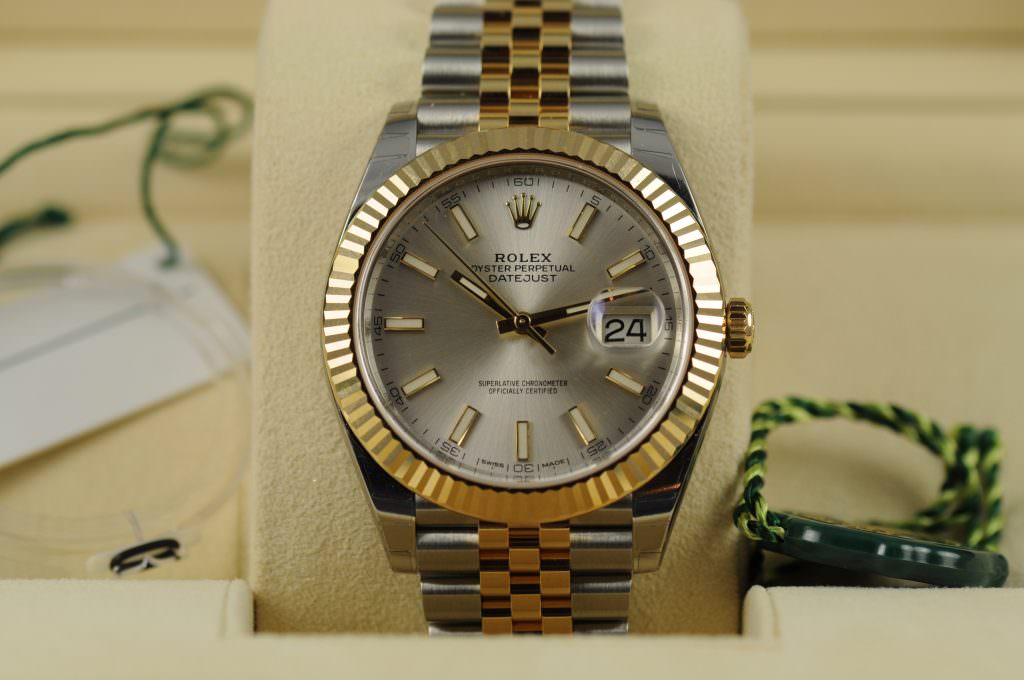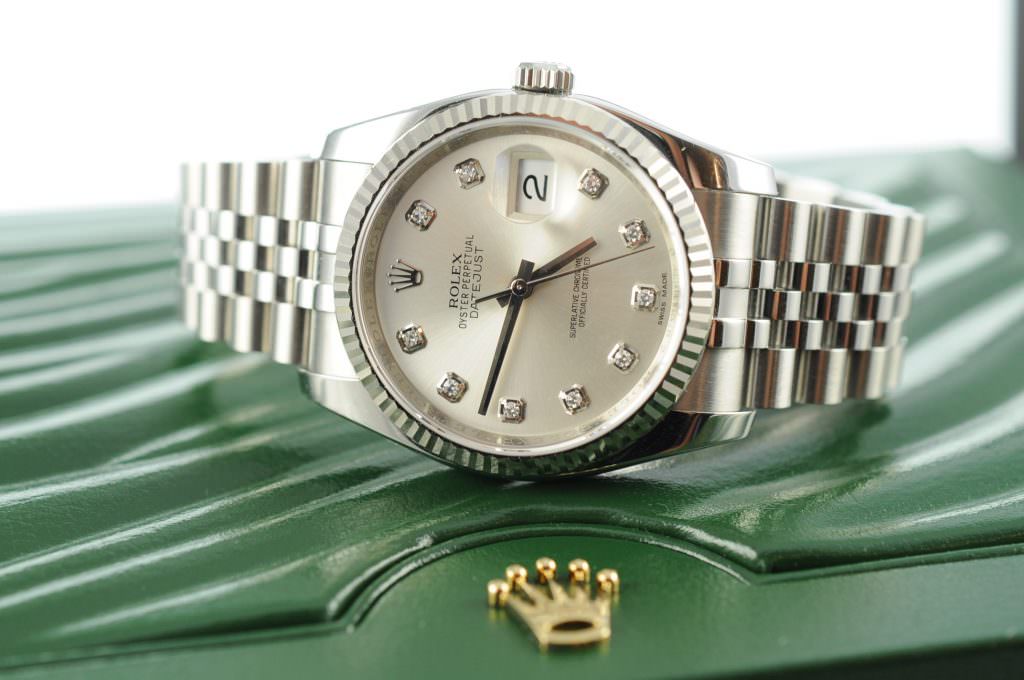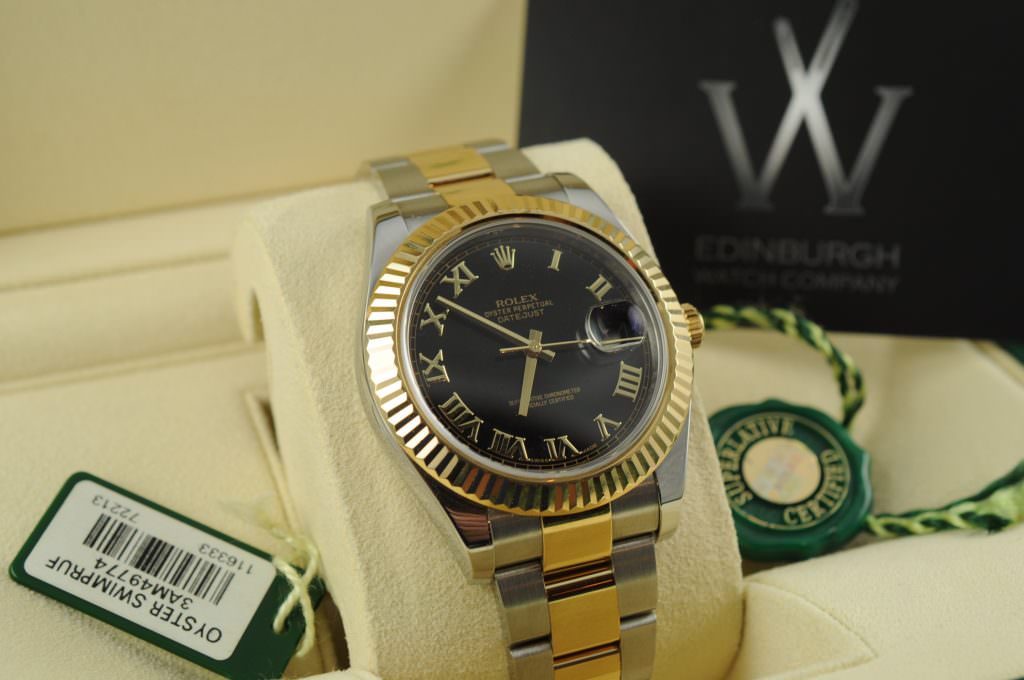Rolex is considered as a pioneer of numerous innovations, they have achieved greatness over time through years of passion, refinement and research. In 1945, a time where timepieces only had an hour, a minute and a second hand, Rolex changed the game and introduced the date window to their watches, leading to what we know and love today, the Rolex Datejust. The Datejust is one of the most successful watches ever made, in terms of popularity, design and accuracy. For the Datejust lovers out there, here’s the history of this iconic watch;
A brief history of Rolex
In 1881, the history of the world’s most famous watch manufacture begins in Kulmbach, a Bavarian city where Hans Wilsdorf, founder of Rolex, was born.
At the age of 24, Wilsdorf traveled to England, after completing a commercial apprenticeship in Germany and later working in the watch industry in Switzerland. He had been into watches from a young age. At that time almost all brands were only manufacturing pocket watches. Something that Wilsdorf had visions of changing.
1905: Wilsdorf & Davis, the origin of a collaboration that led to the world’s leading luxury brand
After two years in London, Wilsdorf was convinced that wristwatches were a highly marketable product. Together with his brother-in-law Alfred Davis, he founded Wilsdorf & Davis. The two partners shared the business – Davis was responsible of the manufacturing, while Wilsdorf purchased the movements. Wilsdorf and Davis’ main business at the time was importing Hermann Aegler’s Swiss movements into England and placing them in quality watch cases made by Dennison and others.
However, this newly created watch brand needed a name suitable for the international market. In 1908, the legend began as Wilsdorf invented the name Rolex. From 1913, Rolex had the exclusivity of the Bieler Aegler SA movements in UK, and even if still protected by Rolex, this name has not been used since the 1930s, as the company had been absorbed by Rolex.
Due to the first World War, Wilsdorf moved the company to Bienne, Switzerland. Montres Rolex SA was officially registered on January 17, 1920.
The long life of an icon
One of the first innovations of Rolex, which had a tremendous impact on the whole market, was the waterproof case, named Oyster Case – a case that was as closed as an oyster. This name and concept is still used nowadays, as well as the specific notched case back, which can be opened only with a special tool.
In 1931, Rolex launched the Oyster Perpetual, equipped with an automatic movement.
In 1945, Hans Wilsdorf revolutionised the watch industry and integrated a new, simple but important feature: a display of the date. Under the reference 4467, the Rolex Datejust was born. A 3-hand gold watch with a date aperture at 3 o’clock that changed automatically at midnight. Thanks to an intermediate gear and a spring mechanism, the date disc was able to make an instant jump at midnight. The date was just, all the time.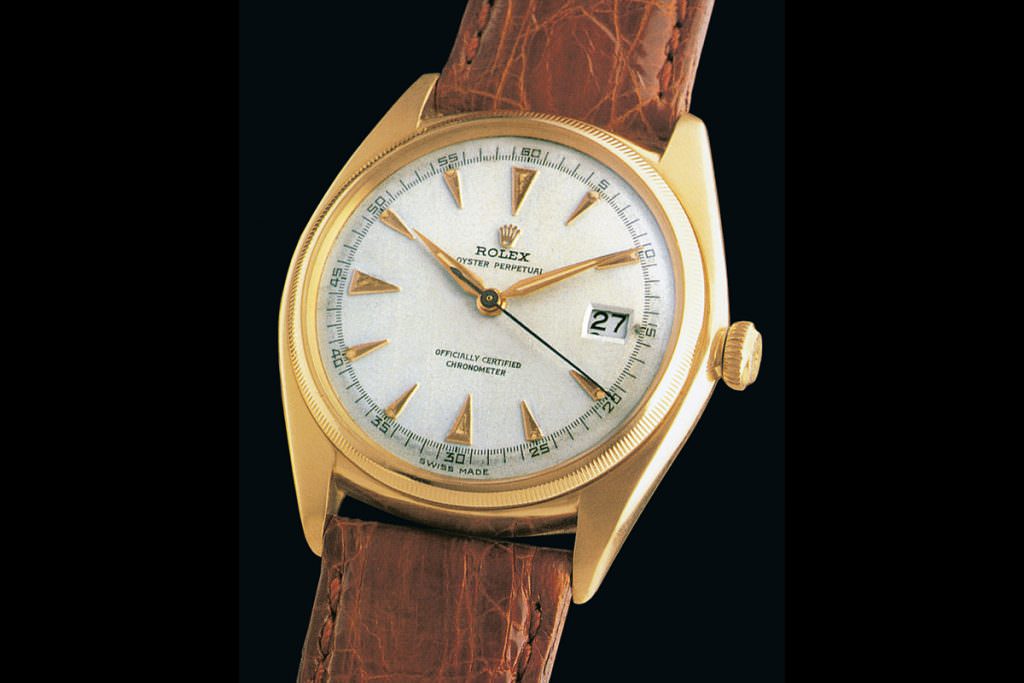
At the beginning, one of the main characteristic of the Rolex Datejust was missing: the date magnifier. It is only in 1954, after nine years of production, that Rolex introduced the so-called Cyclops lens. At the beginning, the watch was only available in yellow gold. Rolex then decided to introduce rose gold, steel or two-tone editions. The bezel was also slightly different at that time as, instead of the fluted design, Rolex used a coin-style bezel.
The watch was a huge success, the automatic winding, the high accuracy and date display made the Oyster Datejust an excellent and practical watch. The high level of water resistance was achieved with a screwed case back that was so-called bubble-back, with its rounded shape dictated by the shape of the rotor. The Datejust also introduced the Jubilee, a new type of bracelet that still exists in Rolex’s collection.
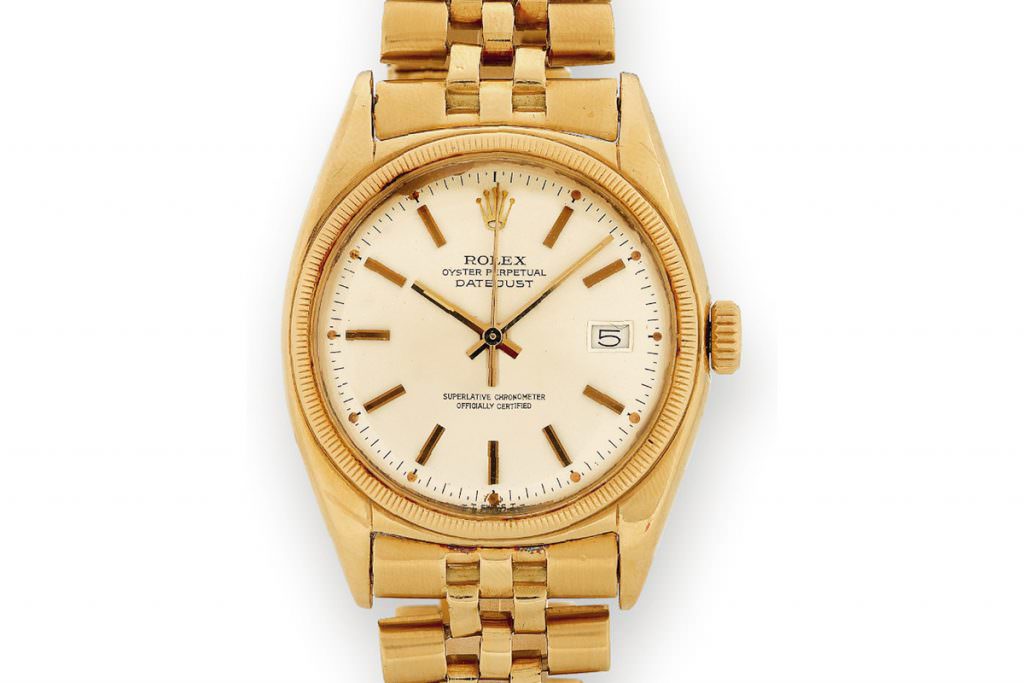
In 1945, the Datejust was using the Calibre 710, replaced later by the Calibre 730, which used 17 jewels. However, these movements, even if reliable and solid, are very difficult to service, as the spare parts are nearly impossible to find. Even Rolex can no longer repair these historical watch models.
In 1957, the design of the Datejust was slightly changed, its new Calibre 1065 movement made case back flat and the magnifier window now appeared too.
In 1965, the movement changed one more time with the introduction of the very famous Calibre 1570. From 1972, the time of this chronometer could be precisely adjusted thanks to a hacking second hand mechanism. Two years later, Rolex introduced the sapphire crystal.
In 1962, 16 watch companies, all shareholders of the Centre Electronique Horloger in Neuchâtel, jointly developed the first quartz caliber, the Beta 21.
Rolex didn’t participate however later improved the concept of the Quartz in its own laboratory and created the OysterQuartz. The Rolex Datejust OysterQuartz ref. 17000 was introduced in 1977, equipped with an in-house quartz movement but proved not to be very successful. Its success is however quite impressive now, with it’s value skyrocketing.
A timeless icon, only slightly improved
A Datejust is highly recognisable, like almost all Rolex models. The shape of the case has developed over the years, but the rest of the watch; dial layout, hands, cyclops and specifications remained practically unchanged. It’s easy to appreciate how refined this timepiece has become.
In early 2000s, Rolex introduced a new flat and polished bezel as an alternative to the fluted bezel. Previously, the sizes had also remained the same, up to the introduction of the current Datejust II, going from 36 to 41 millimeters, an answer to the increasing demand for large sized watches.
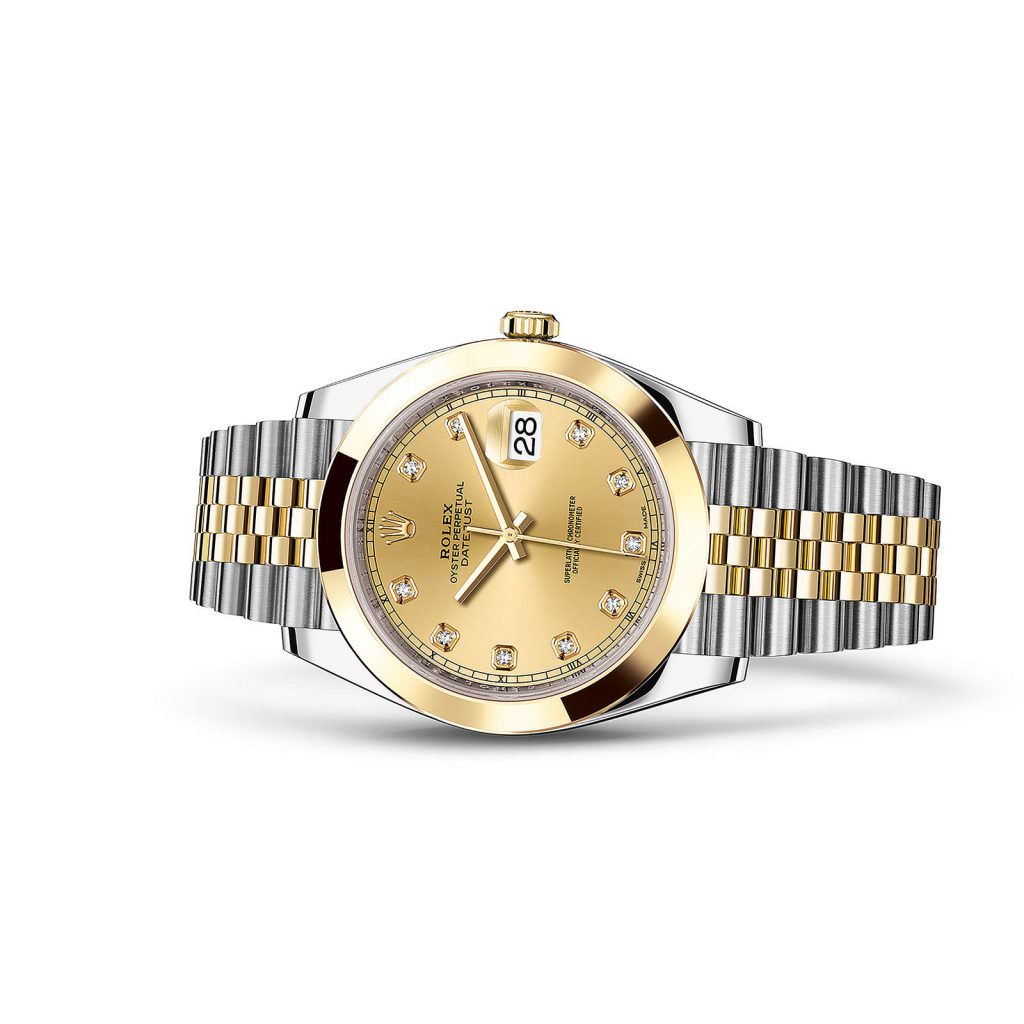
This second edition of the Datejust remains elegant and close in its design to the basic Rolex Datejust, it’s one that we love here at Edinburgh Watch Company.
The movements have also been hugely improved, but not totally renewed. With the Calibre 3135 seeing ever better time accuracy than ever before.
In 2014, Rolex just introduced 3 new editions of the Datejust with coloured dials, proving once again the versatility and timeless spirit of this watch.
Constant improvements have created a unique watch: a reliable daily watch, highly accurate and suitable for every outfit.
The Rolex Datejust is one that we are always on the lookout for, and always have in stock. There are many design variations available, if you’ve got your heart set on one in particular, please let us know and we will do our very best to source it for you.
Alternatively, you can see our Rolex Datejust collection below or by clicking here. you can also see some of our other articles on the history of other Rolex models by clicking here.

